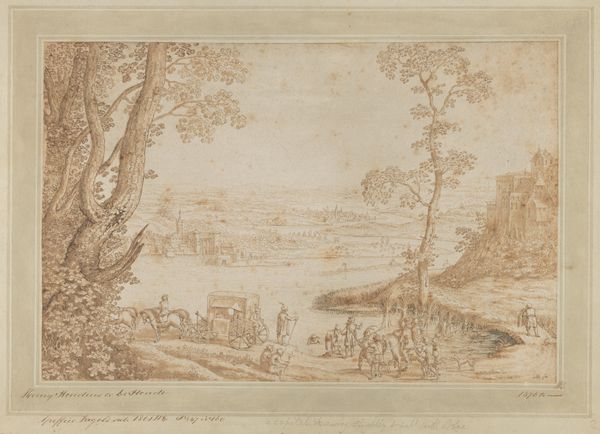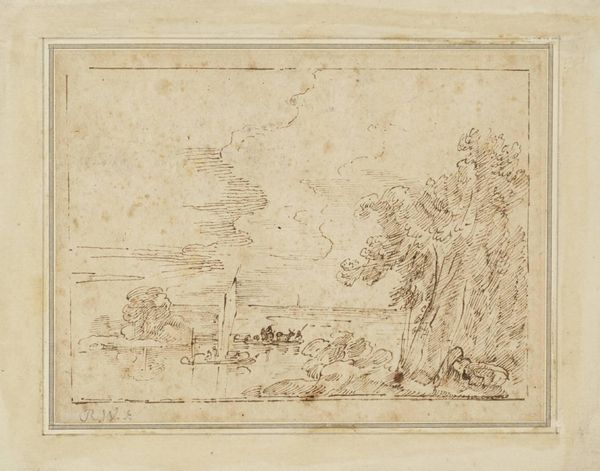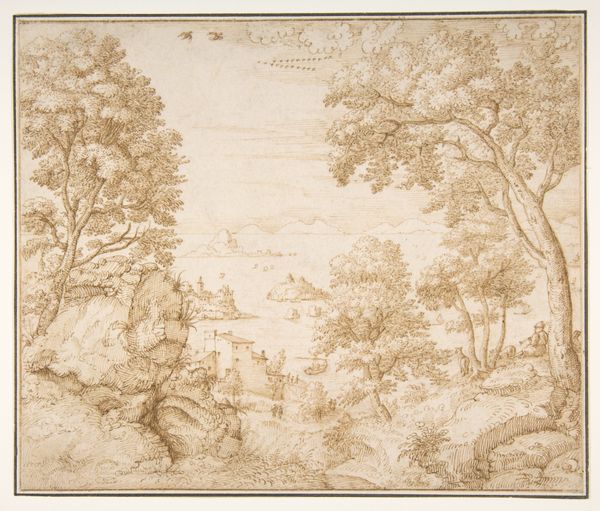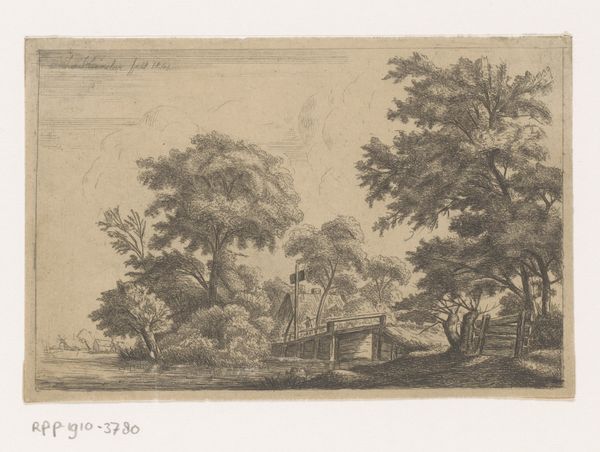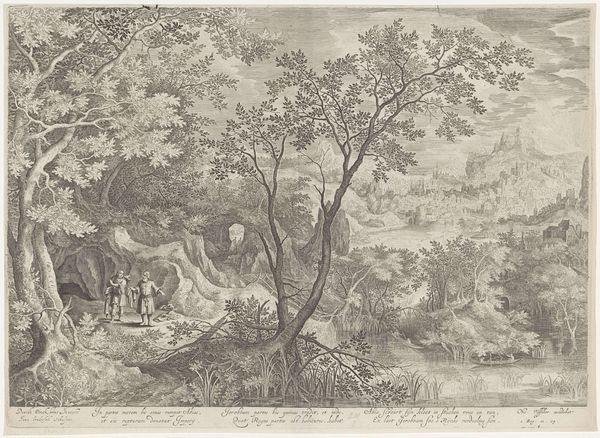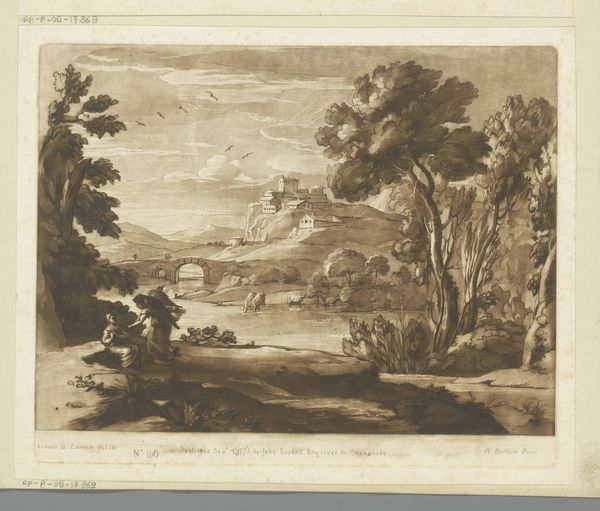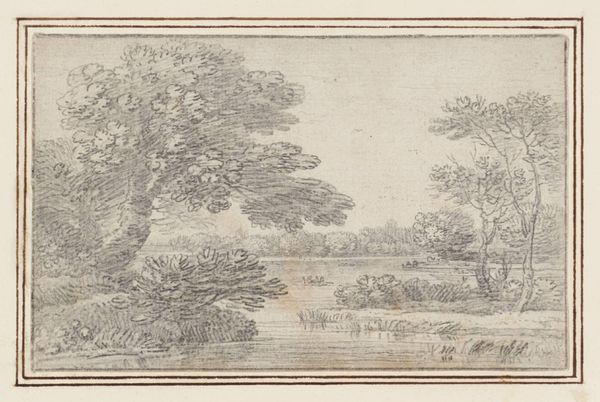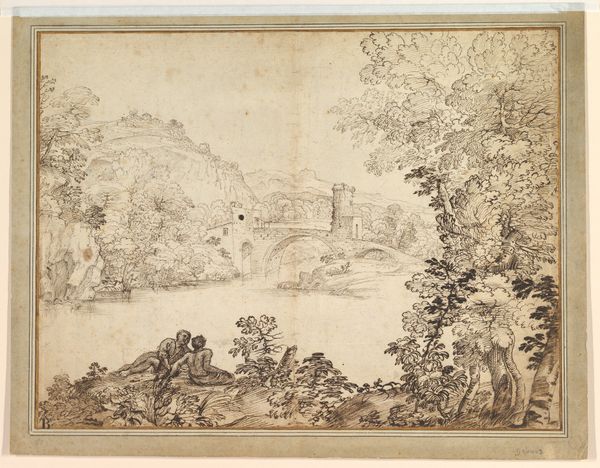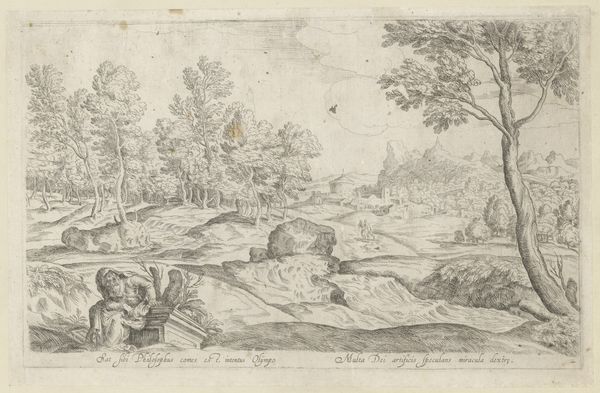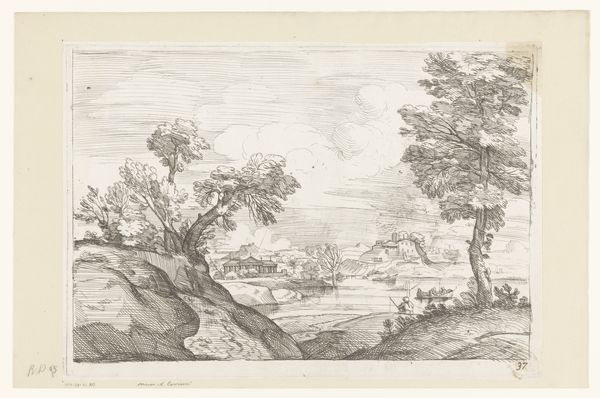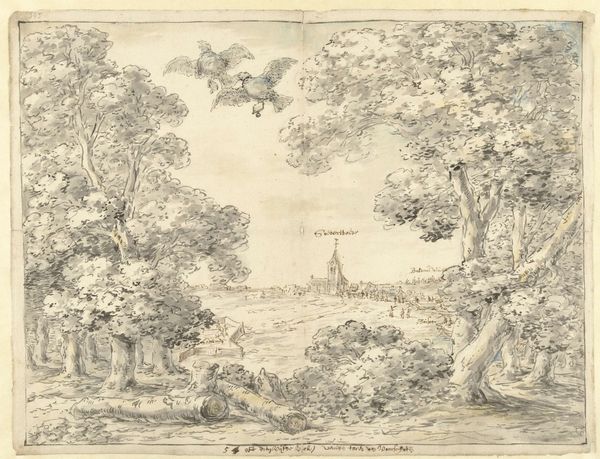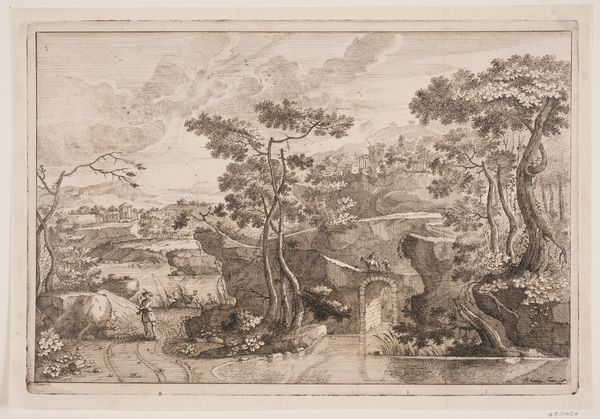
Design for a Stage Set at the Opéra, Paris 1828 - 1890
0:00
0:00
Dimensions: sheet: 11 1/4 x 21 3/4 in. (28.6 x 55.2 cm)
Copyright: Public Domain
Curator: What strikes me immediately is the tranquility of this sketch, a quiet before the storm of an opera performance, perhaps? The soft pencil work almost hums with potential energy. Editor: You've sensed it perfectly! This is Eugène Cicéri's "Design for a Stage Set at the Opéra, Paris," likely created between 1828 and 1890. It's currently housed at the Metropolitan Museum of Art. You're seeing a pencil drawing, touched with printmaking techniques, all on paper. Cicéri was quite celebrated for his contributions to theatrical design during a really interesting period of transformation in Parisian cultural life. Curator: "Transformation" feels right. You see the scaffolding of artifice laid bare, those faint grid lines suggesting something about to spring to life, but captured in its embryonic stage. A romantic landscape, certainly, but also a reminder of all the unseen labour needed to conjure an illusion. Does that grid give you chills, too? It takes some of the romance out of the subject matter... Editor: Precisely. Cicéri was head of one of the most successful stage design studios, playing a vital, yet often invisible, role. His sets had to not only be visually arresting but also politically astute, catering to the tastes and expectations of the Parisian operagoers but in line with censorship and budgets. The stage was this critical space for political and social display. This little drawing becomes more fascinating when seen in the larger context. Curator: I'm seeing now how such "invisible" labor built such elaborate visual spectacles to support political agendas through aesthetics. But let’s go back to the artistry for a moment, what can this sketch tell us about the development of Romanticism? How is it typical, or even subversive? Editor: Well, in this transitional period, we see Romanticism being formalized into something like Academic art. Here the stage offers an ideal testing ground for expressing grand emotions in controlled ways—offering sublime nature to those wealthy enough to access that emotional encounter safely. At its core, romanticism in the political sphere tried to negotiate new ideas around rights. Here we can imagine wealthy and powerful spectators grappling with "wilderness" as it came to mean, via this controlled staging, a sense of freedom and autonomy for themselves. Curator: So, a purchased, highly mediated sense of freedom. I find that darkly amusing... and somehow very telling. Now I can imagine those gilded opera boxes, brimming with people hoping for transcendence while the city churned with real revolution outside. Editor: Exactly! It is interesting to observe such political movements from afar through artifacts. What began as Romantic is almost Realist in that perspective. I’ll take the both of them with some quiet amusement too. Curator: That subtle blend makes this seemingly simple sketch utterly captivating. A perfect little keyhole into a much larger world. Editor: Indeed, there is still plenty more room for exploration for the viewer, wouldn't you agree?
Comments
No comments
Be the first to comment and join the conversation on the ultimate creative platform.
